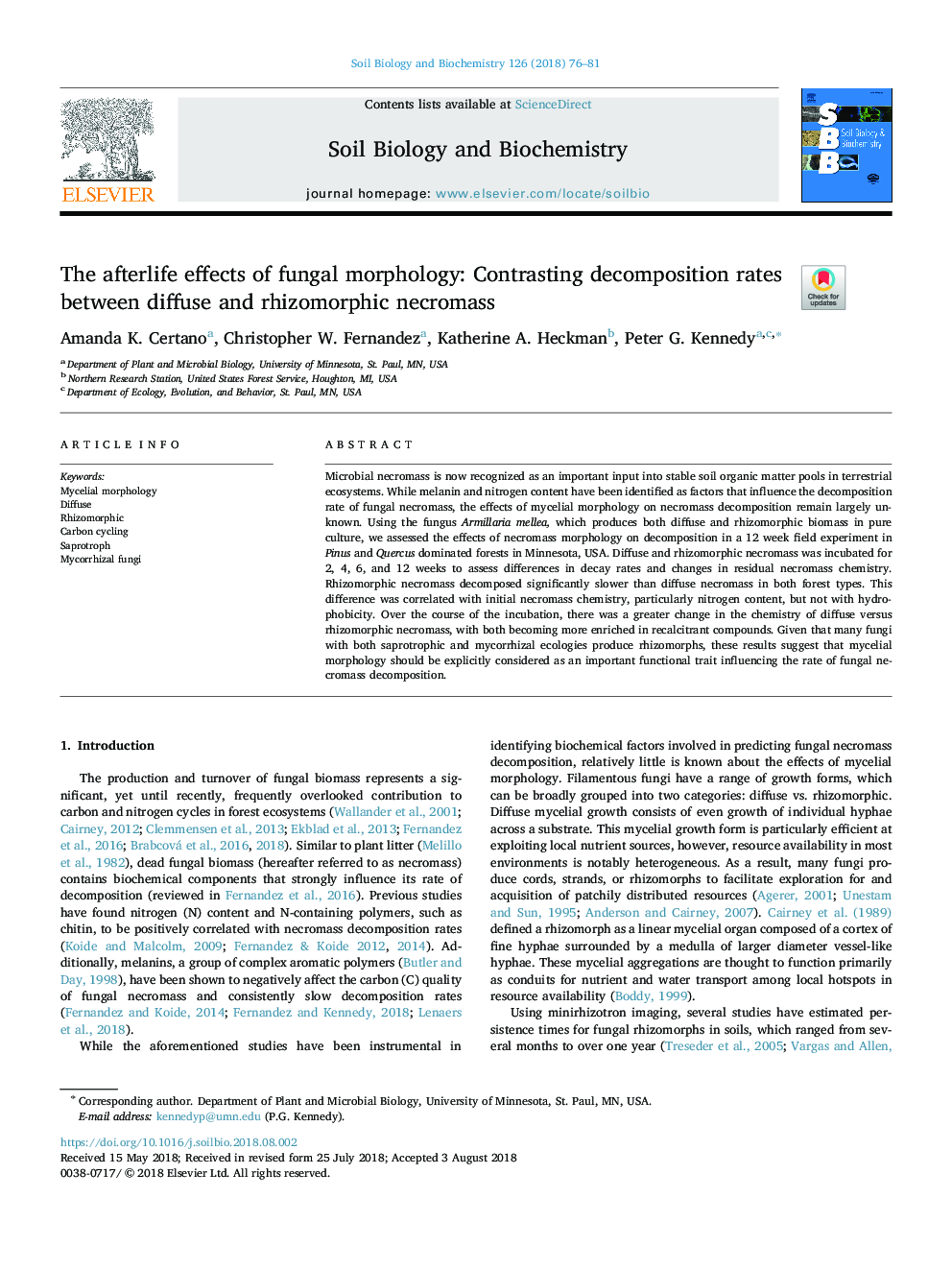| کد مقاله | کد نشریه | سال انتشار | مقاله انگلیسی | نسخه تمام متن |
|---|---|---|---|---|
| 9954258 | 1542558 | 2018 | 6 صفحه PDF | دانلود رایگان |
عنوان انگلیسی مقاله ISI
The afterlife effects of fungal morphology: Contrasting decomposition rates between diffuse and rhizomorphic necromass
ترجمه فارسی عنوان
اثرات پس از مرگ مورفولوژی قارچی: مقادیر قابل تجزیه بین نیکومااس منتشر شده و ریزومورفیک
دانلود مقاله + سفارش ترجمه
دانلود مقاله ISI انگلیسی
رایگان برای ایرانیان
کلمات کلیدی
موضوعات مرتبط
علوم زیستی و بیوفناوری
علوم کشاورزی و بیولوژیک
دانش خاک شناسی
چکیده انگلیسی
Microbial necromass is now recognized as an important input into stable soil organic matter pools in terrestrial ecosystems. While melanin and nitrogen content have been identified as factors that influence the decomposition rate of fungal necromass, the effects of mycelial morphology on necromass decomposition remain largely unknown. Using the fungus Armillaria mellea, which produces both diffuse and rhizomorphic biomass in pure culture, we assessed the effects of necromass morphology on decomposition in a 12 week field experiment in Pinus and Quercus dominated forests in Minnesota, USA. Diffuse and rhizomorphic necromass was incubated for 2, 4, 6, and 12 weeks to assess differences in decay rates and changes in residual necromass chemistry. Rhizomorphic necromass decomposed significantly slower than diffuse necromass in both forest types. This difference was correlated with initial necromass chemistry, particularly nitrogen content, but not with hydrophobicity. Over the course of the incubation, there was a greater change in the chemistry of diffuse versus rhizomorphic necromass, with both becoming more enriched in recalcitrant compounds. Given that many fungi with both saprotrophic and mycorrhizal ecologies produce rhizomorphs, these results suggest that mycelial morphology should be explicitly considered as an important functional trait influencing the rate of fungal necromass decomposition.
ناشر
Database: Elsevier - ScienceDirect (ساینس دایرکت)
Journal: Soil Biology and Biochemistry - Volume 126, November 2018, Pages 76-81
Journal: Soil Biology and Biochemistry - Volume 126, November 2018, Pages 76-81
نویسندگان
Amanda K. Certano, Christopher W. Fernandez, Katherine A. Heckman, Peter G. Kennedy,
